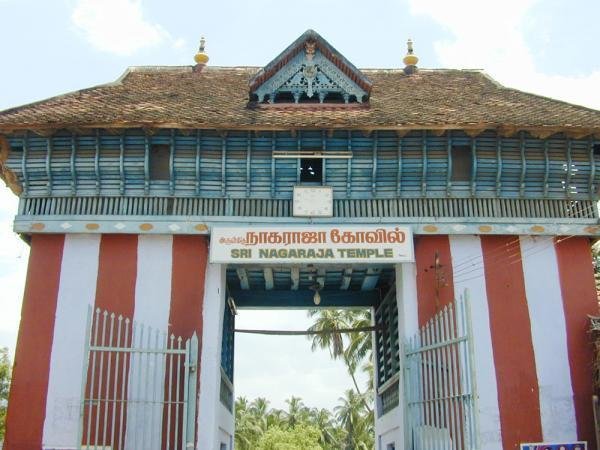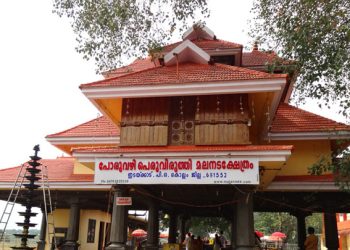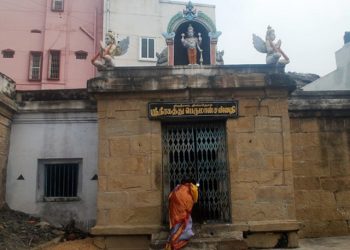Nagaraja Temple is a Hindu temple worshipping Nagaraja situated at the heart of Nagercoil town. The name for the town Nagercoil originated from this temple. The temple has innumerable statues of serpents.Sri Nagaraja Swami is a swayambumurthi in the temple. This is an ideal prayer destination for those facing adverse aspects of serpent planets.
Shrine’s History
It is difficult to ascertain the exact age of the temple. There is no authentic epigraph to aid the historian with its chronology. The mountain Mahendragiri in the Kanyakumari district is referred to as the abode of Nagas in the Ramayana of Valmiki. From this, it can be presumed that the origin of Naga influence in the area goes back to legendary times. From the five headed serpent deities of the temple, the name of this town Nagercoil is derived; gradually its old name, Kottar, has mostly faded. There is a part of town called Kottar, so the old name remains.
Legends Associated with This Shrine
Nagas are children of Kashyapa and Kadru. Among the prominent Nāgas of Hinduism are Manasa, Sesha, and Vasuki. The Nairs of Kerala and the ethnically related Tulu Bunts of Karnataka are clans which are believed to have originated from the serpent dynasty. Legends says that the nāgas also carry the elixir of life and immortality. Garuda once brought it to them and put a cup with elixir on the ground but it was taken away by Indra. However, a few drops remained on the grass. The nāgas licked up the drops, but in doing so, cut their tongues on the grass, and since then their tongues have been forked. Nagas are snakes that may take human form. They tend to be very curious. According to traditions, Nāgas are only malevolent to humans when they have been mistreated. They are susceptible to mankind’s disrespectful actions in relation to the environment. They are also associated with waters ? rivers, lakes, seas, and wells ? and are generally regarded as guardians of treasure. They are objects of great reverence in some parts of southern India where it is believed that they bring fertility and prosperity to their veneration. Expensive and grand rituals like Nagamandala are conducted in their honor.

Shrine Timings
4.00 a.m. to 11.30 a.m. and 5.00 p.m. to 8.30 p.m.
Extra Information About this Shrine
One day when a girl was cutting grass, blood began to spurt from below. She discovered that the sickle had cut into the head of a five-headed serpent. Dazed with fear, the girl fled to the nearest village and reported what she had seen. People in large numbers flocked to the spot and witnessed the miracle with their own eyes. By the joint effort of the villagers, the place was cleared and preserved for the purpose of worship. They built a small shrine in the locality and worshipped the five-headed serpent. Hearing that the miracle happened at this place, people from other places visited the temple and offered poojas.













































